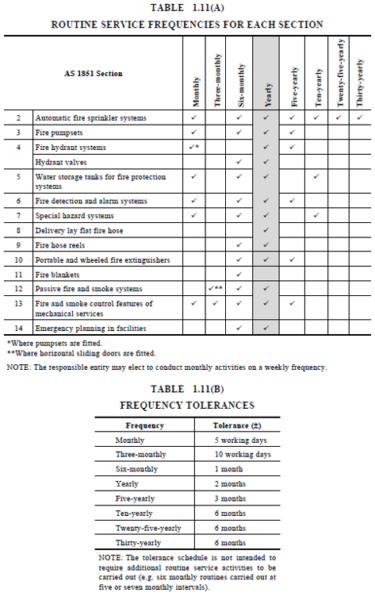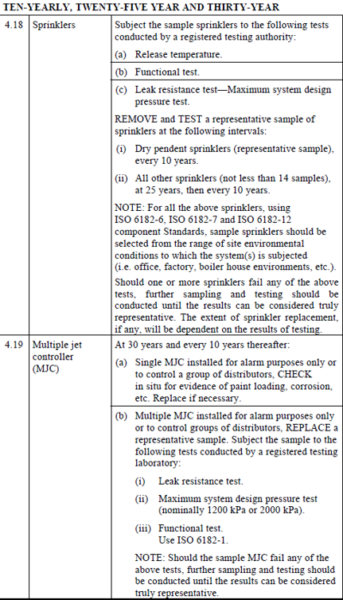13 February 2026 changes to AFSS requirements will significantly impact the sector
Posted 18 March 2025
Category: Strata
Design and Building Practitioners Act Compliance Quiz
Find out whether your planned works need to comply with the Design and Building Practitioners Act 2020.
UPDATE: On 31 January 2025, compliance with this regulation was deferred until 13 February 2026.
The Environmental Planning and Assessment (Development Certification and Fire Safety) Amendment (Fire Safety) Regulation 2022 under the Environmental Planning and Assessment Act 1979 is set to introduce new requirements from 13 February 2026.
The amending regulation aims to reduce life safety risks, damage to property and the incidence and cost of fire safety defects through more independent oversight of key events associated with incorporating fire safety measures in buildings.
If you live in an apartment building in New South Wales, you probably obtain an annual fire safety statement (“AFSS”) each year (unless a pre 1 July 1988 building – roughly strata plans 1 to 33200). An AFSS is a declaration by or on behalf of a building owner that an accredited practitioner has assessed, inspected and verified the performance of each existing essential fire safety measure that applies to the building. From 13 February 2025, the amending regulation introduces new requirements which will impact how an Owners Corporation gets its AFSS.
The amending regulation proposes to introduce mandatory compliance with Australian Standard 1851-2012: Routine Service of Fire Protection Systems and Equipment by Standards Australia (“AS1851”) if a maintenance activity is not addressed by a performance solution approved for building work, and is addressed by AS1851.
Imminent considerations
The AS1851 standard outlines the maintenance requirements for 14 essential fire safety measures. It is incumbent upon an Owners Corporation to adhere to these measures, unless alternative maintenance methods have been provided for by performance solutions. The standard stipulates monthly servicing of 7 essential fire safety measures and necessitates the documentation of any missed services. Non-compliance can result in substantial penalties. There is no defence to prosecution for non-compliance unless access is refused by a lot owner.
Complying with the AS1851 standard can be a demanding task due to the additional work and obligations it imposes. A contractor may seek an indemnity or a limitation of liability from an Owners Corporation for any failure to meet the AS1851 requirements prior to agreeing to undertake the work.
A contractor may request protection from any damages incurred due to rigorous testing procedures. For instance, conducting a hydrostatic test could potentially lead to pipe ruptures. Where a booster is fitted, a hydrostatic pressure test on the entire system at 1.5 times the system working pressure of the required design standard is required as a part of the five-yearly service of the fire hydrant systems. In such cases, a contractor may prefer not to assume responsibility for the damages caused by pipe bursts during the execution of a test mandated by AS1851.
An Owners Corporation should evaluate whether proposed contracts contain any terms that could be deemed unfair and thus, potentially void or unenforceable. Unfair contract terms can attract significant penalties in their own right. The maximum penalty for a corporation is the greater of $50 million, three times the value of the benefit obtained, or 30% of the corporation’s turnover.
The additional workload required to meet the AS1851 standards may lead to a scarcity of workers who are capable and willing to perform these services.
How do these changes affect Owners Corporations?
- Inspections and Testing
AS1851 is essentially a comprehensive guide that provides clear instructions on how to conduct inspections and tests on fire safety measures. It specifies the frequency at which each fire safety measure should be inspected and outlines the precise procedures and checks to be performed during each inspection. AS1851 requires some routine service inspections more frequently than once per year. [i]
Under the existing regulations, adherence to AS1851 was not explicitly mandatory. However, it was often utilised as it is a pertinent standard for conducting tests and inspections related to fire safety.
In addition to regular monthly and annual inspection and testing AS1851 provides detailed extensive guidelines for services every 5, 10, 25, and 30 years. If an Owners Corporation hasn’t previously performed some of these services, it could face costly maintenance. For instance, one requirement under AS1851 is for a representative sample of all sprinklers to be removed and tested at 25 years, then every 10 years. [ii]
- Record Keeping
The amending regulations also require an owner to keep the records required by AS1851 or the approved performance solution, on-site at the building for at least 7 years, and make the records available for inspection by the Fire Commissioner or the relevant council. AS1851 requires records to be kept on-site in a prescribed format, including a hardcopies of service record. The maximum penalty for non-compliance with the record keeping requirements is 300 penalty units (or $33,000) for a corporation.
- Onus on Owners
The amending regulations state the owner of a building must ensure that the maintenance activities for each essential fire safety measure for the building are undertaken in accordance with AS1851. The maximum penalty for non-compliance is 600 penalty units (or $66,000) for a corporation. This could theoretically result in a three-fold penalty of $924,000 per month (or $11,088,000 per year for continued non-compliances) for failure to:
- perform routine services of 7 essential fire safety measures addressed by AS1851 for a building (if not performed within 5 working days of the monthly required service), (max 600 penalty units); and
- not recording those missed services (which is also a mandatory requirement of AS1851)(max 300 penalty units); and
- not maintaining an on-site record of the missed service (max 300 penalty units).
An Owners Corporation should hire suitably qualified contractors for the AS1851 required monthly inspections and maintenance. While these contractors don’t have to be accredited fire safety practitioners, it might be wise to hire those who are. This is because an accredited practitioner will need to evaluate the same fire safety measures’ performance to obtain an AFSS.
Costs [1]
“The proposed reforms regarding fire safety certifiers, mandating AS1851 and consultation with FRNSW are likely to add some costs to some building owners and/or developers. The costs of engaging people to maintain essential fire safety measures would be borne by building owners where AS1851 is not already being used. If AS1851 is already in use, no extra costs would be incurred.”
Planning ahead
An Owners Corporation might want to plan ahead by performing earlier and more frequent fire safety inspections through an accredited fire safety practitioner, which could take longer, be more costly and reveal more issues than usually expected. Additionally, an Owners Corporation could consider:
- Arranging for provisions of all records required to be located on-site for at least 7 years.
- Budgeting for more fire service works.
- Budgeting for more inspections.
- Conducting inspections of Council’s records to obtain relevant materials, such as performance solutions.
- Expecting more delays in the ability to provide an AFSS and penalties for delay.
- Obtaining copies of records for inspections under section 182 of the SSMA.
- Obtaining legal advice on prospective contracts.
- Reviewing your strata managing agent agreement to ensure your strata manager is responsible for taking all reasonable steps to maintain compliance with AS1851 without a limitation of liability for failure to do so.
Therefore, it is advisable to start early, seek advice, and begin working towards fulfilling your new mandatory obligations. Bannermans Lawyers can provide guidance in this regard.
Please note that this article provides general advice only. For specific legal advice, we recommend contacting one of our experienced legal practitioners.
[i]

[ii]

[1] Regulatory Impact Statement, Environmental Planning and Assessment (Development Certification and Fire Safety) Amendment (Fire Safety) Regulation 2022, August 2022.
***The information contained in this article is general information only and not legal advice. The currency, accuracy and completeness of this article (and its contents) should be checked by obtaining independent legal advice before you take any action or otherwise rely upon its contents in any way.

